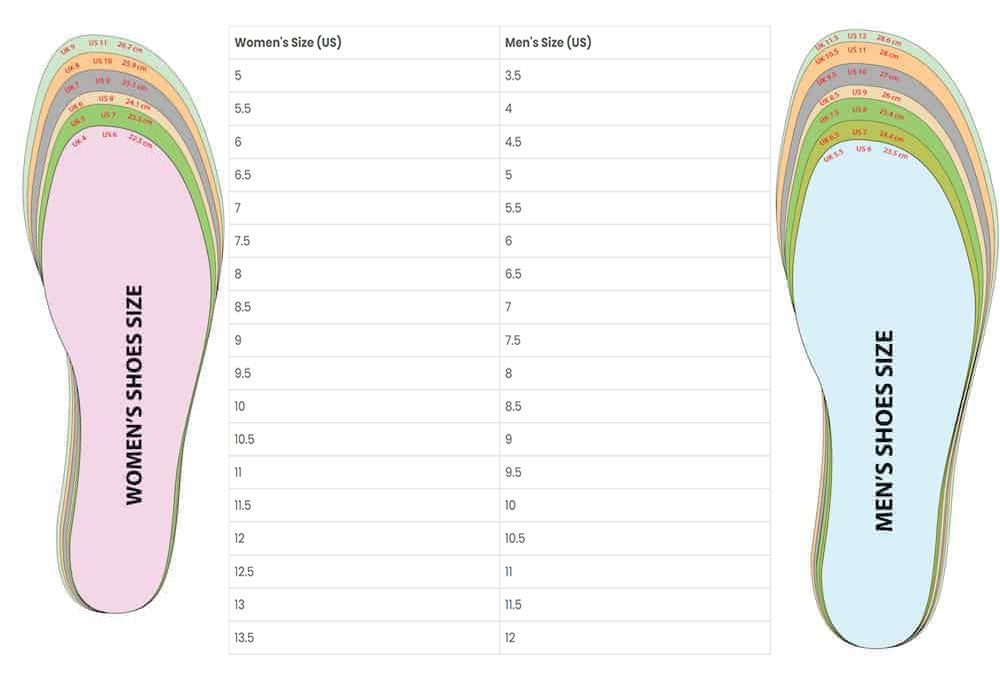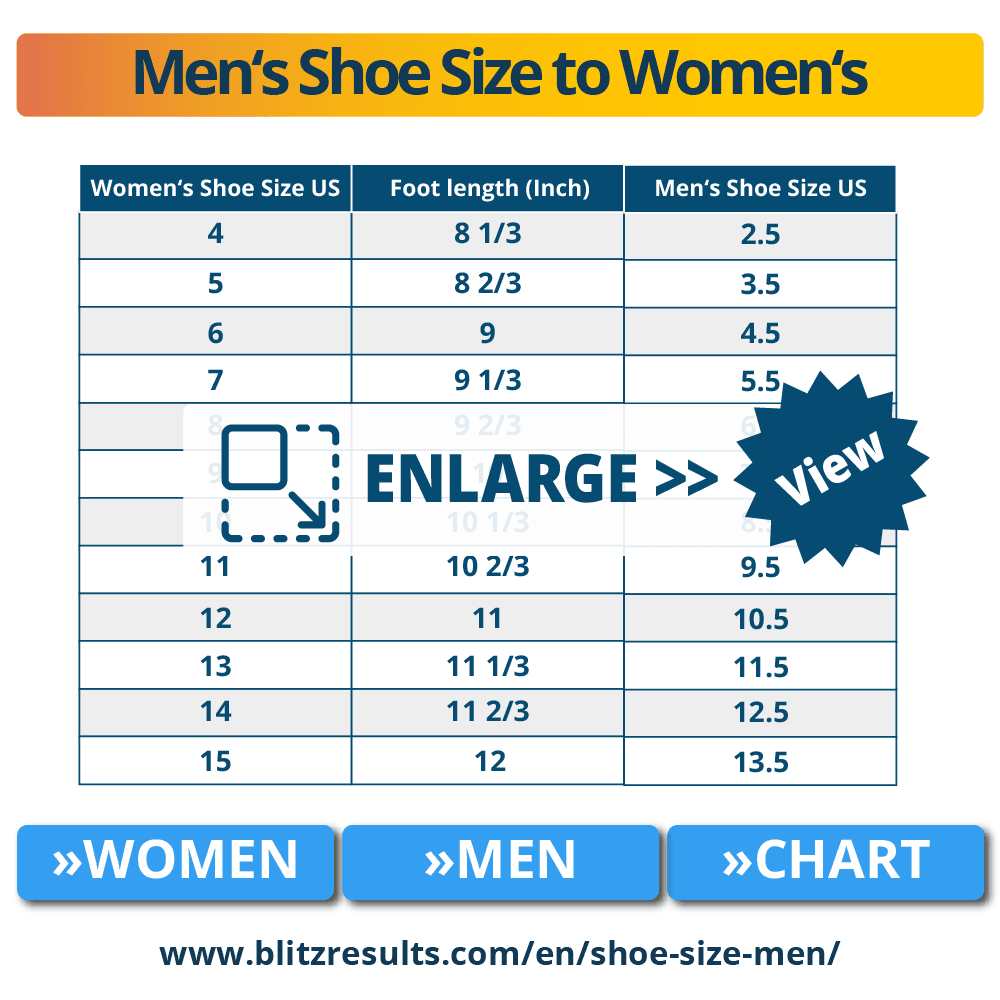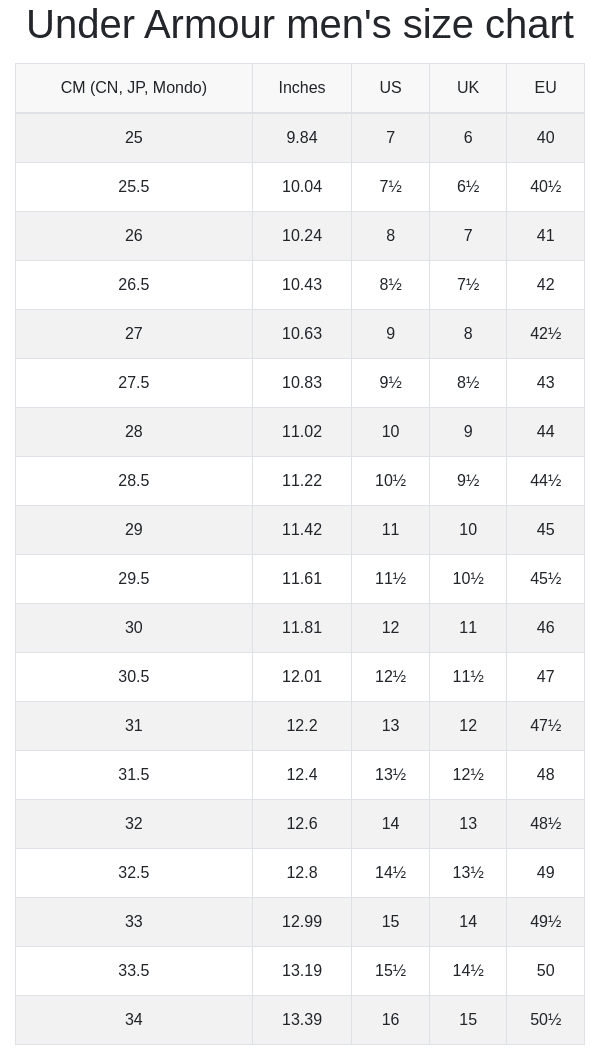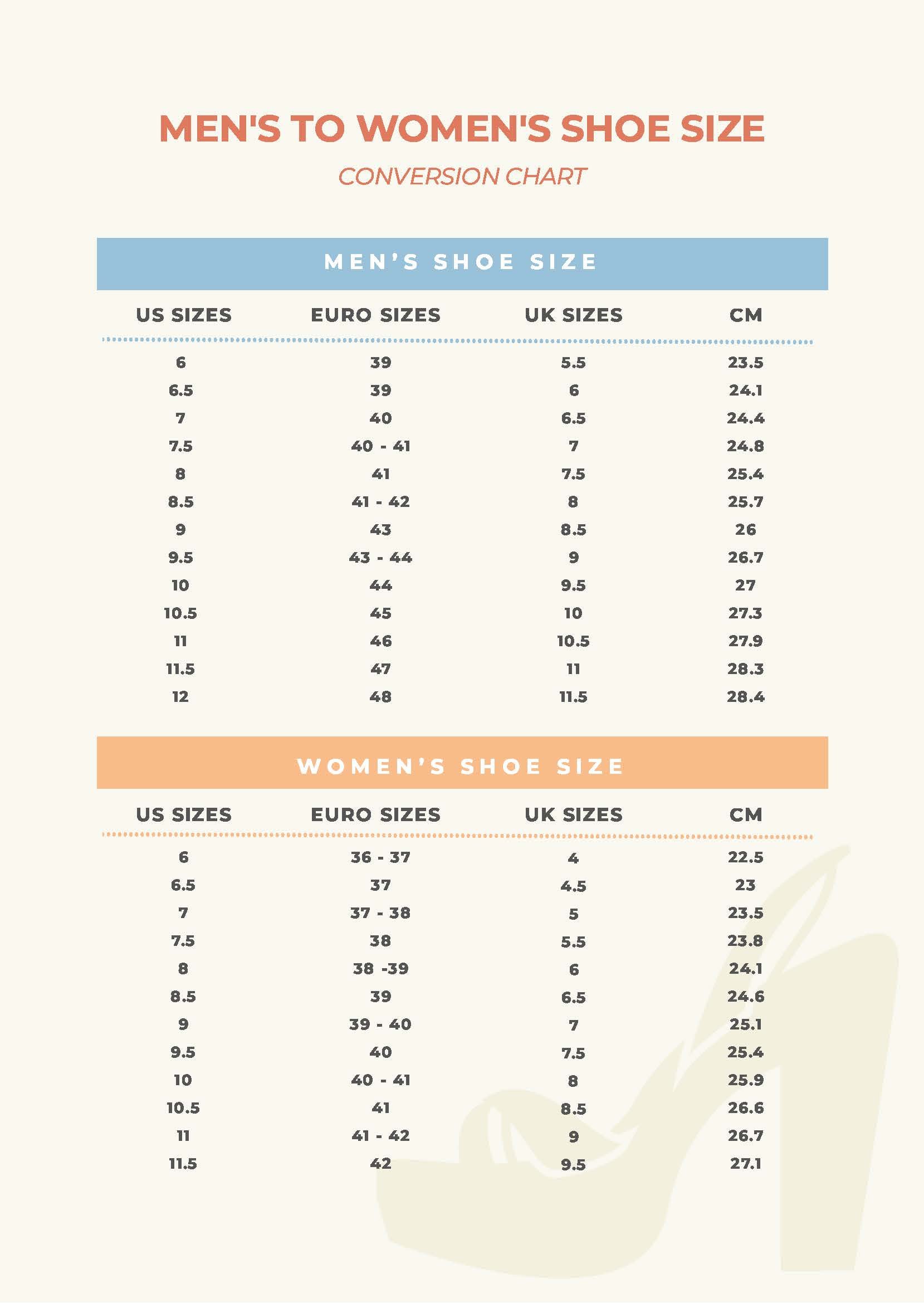Welcome to your ultimate guide on understanding the conversion between men’s and women’s shoe sizes. Whether you’re a fashion aficionado, a footwear professional, or a casual buyer looking for your next pair of kicks, you’re in the right place! This comprehensive article dives deep into the nuances of shoe sizing, offers comparison charts, real-world footwear experiences, and provides insights into popular shoe brands in the U.S. market.
Understanding Shoe Sizes
The world of footwear sizing can often seem daunting due to the variations across brands, styles, and gender distinctions. In the United States, shoe sizes typically follow a standard measurement system that varies for men, women, and children. Understanding these differences is crucial for making informed purchasing decisions.
Shoe sizes are determined generally by length and width, and in the U.S., men’s sizes are approximately 1.5 sizes smaller than women’s sizes. This means that if you wear a women’s size 8, you’d likely wear a men’s size 6.5. However, size conversion can vary significantly depending on the brand and shoe type. This article will further elaborate on the conversion details and provide practical tips for selecting the right footwear.
Men’s vs. Women’s Shoe Sizes: The Basics
Size Conversion Table
| Men’s Size | Women’s Size |
|---|---|
| 6 | 7.5 |
| 7 | 8.5 |
| 8 | 9.5 |
| 9 | 10.5 |
| 10 | 11.5 |
| 11 | 12.5 |
| 12 | 13.5 |
Note that these conversions may have slight variations based on the shoe style and manufacturer.
Real-World Footwear Experiences
Case Study: The Popularity of Unisex Styles
In recent years, the emergence of unisex footwear has skyrocketed in popularity among sneaker enthusiasts and casual wearers alike. When brand giants like Nike and Adidas launched unisex collections, they saw a surge in sales. For instance, the Nike Air Force 1, traditionally available in men’s sizes, has gained immense popularity among women, prompting many to explore size conversions.
A local sneaker store in Los Angeles reported that about 60% of its sales in unisex styles were women purchasing men’s sizes. This trend reflects not only the shift in fashion preferences but also the move towards inclusivity in marketing strategies.
Tips for Choosing the Right Size
1. Measure Your Feet
Measuring your feet is an essential step before making any shoe purchase. Use a measuring tape to determine the length from the heel to the longest toe and then refer to a sizing chart for accurate sizing.
2. Understand Brand-Specific Sizing
Different brands may have slight variations in sizing. It’s essential to check individual brand sizing guides. For example, a New Balance size 9 might fit differently than a Vans size 9, even though they are both labeled the same.
3. Try Before You Buy
Whenever possible, try shoes on before purchasing. If shopping online, consider retailers with free returns to ensure you can exchange sizes if necessary.

Successful Product Highlights
Top Men’s and Women’s Footwear Brands
Nike
Nike is renowned for its innovative designs and extensive size range. The Air Max and Air Force series are popular among both genders, often leading to size swaps due to unisex styles and personal preferences.
Adidas
Adidas has successfully catered to the unisex market with its Superstar and Stan Smith models. Reports show that women are increasingly opting for men’s sizes in these iconic sneakers, with many citing comfort and style as primary factors.
New Balance
Known for comfort and support, New Balance offers a wide array of sizes and widths, making them ideal for individuals needing specialized footwear. The brand’s commitment to inclusivity in sizing is reflected in their diverse target market.
Pros and Cons of Men’s vs. Women’s Shoes
Pros of Men’s Shoes
- Often designed with a wider fit, accommodating varying foot shapes.
- Available in a broader range of colors and styles.
- Generally built for durability, appealing to athletes and casual wearers alike.

Cons of Men’s Shoes
- Styles may lack the trendy designs popular among women.
- Fit and comfort may vary significantly for those unaccustomed to men’s sizing.
Pros of Women’s Shoes
- Fashion-forward designs tailored to current style trends.
- Enhanced emphasis on comfort and fit specifically for women’s foot anatomy.

Cons of Women’s Shoes
- Less availability in wider sizes compared to men’s options.
- May sacrifice durability for style in some models.
Frequently Asked Questions (FAQs)
1. How do I convert men’s shoe sizes to women’s?
To convert men’s shoe sizes to women’s, add 1.5 sizes. For example, a men’s size 8 would be a women’s size 9.5.

2. Are there brands that cater specifically to unisex shoe sizes?
Yes, several brands like Converse, Nike, and Adidas offer unisex shoe options that are suitable for all genders.
3. What are some tips for buying shoes online?
Always check the sizing guide, read product reviews, and consider retailers with flexible return policies to ensure the perfect fit.

4. Can a woman wear men’s shoes?
Absolutely! Many women find men’s shoes comfortable and stylish, especially in unisex designs.
5. Are women’s shoes wider than men’s?
Typically, men’s shoes are wider than women’s due to anatomical differences in foot structure; however, this can vary by brand.

6. What are the best brands for wide-fit shoes?
Brands like New Balance, Brooks, and Asics are renowned for their wide-fit options, suitable for both men and women.
7. Do shoe sizes differ internationally?
Yes, shoe sizes can differ significantly between countries; always refer to international sizing charts when purchasing from abroad.

8. Is it better to buy shoes in-store or online?
Both have their advantages. In-store purchases allow for trying on, while online shopping often provides a broader selection and better prices.
9. Should I size up or down for running shoes?
It’s generally recommended to size up by half a size for running shoes to accommodate foot swelling during exercise.
10. How often should I replace my shoes?
Most experts recommend replacing running shoes every 300-500 miles, while casual shoes can last between 6-12 months, depending on use.